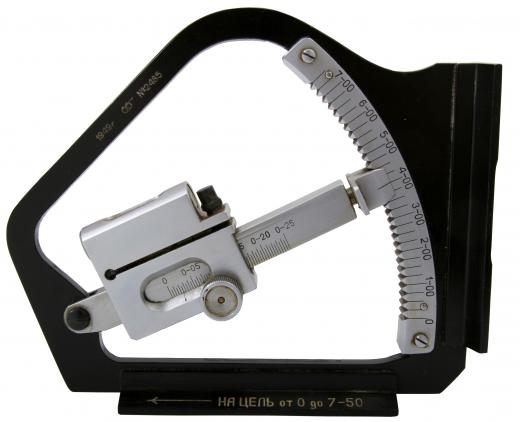An angle meter is a device used to determine the angle of any given work piece. This can be a wall or a railing and even a staircase. The angle meter is also used in metal working and manufacturing. It allows the worker to replicate any given angle in a production run. Creating precise angles allows for a consistent and uniform fit when building two or more pieces in a single assembly.
Angle meters typically utilize a bubble level and a pointer needle on a grid. By placing the meter on the work piece, the needle will point to the angle of the piece in degrees. If the piece in question is 45 degrees, the builder can then replicate the 45-degree angle on a piece at the workbench that will fit perfectly when put into place with the original.

The angle meter is also a helpful tool when creating new plumbing. By using the angle meter on the plumbing pipes, the builder can ensure a proper flow or drain and build all of the plumbing on the same angle. The angle finder is also helpful in finding a slow drain by checking the angles of all of the existing plumbing. Any drain line that is below the required angle can usually be replaced.
Often when installing a water line, the use of an angle meter will ensure a proper drop in the line to allow for proper draining in the winter time. A water line that is filled with water or holds water in a low spot will be subject to freeze and split in the winter time. An angle meter can show any variations in the run of the line and allow repair to eliminate deviation from the run.
While many angle meters are simply gravity operated, there are automated meters that use batteries and have actual numerical read outs showing the angle in degrees. These are especially helpful in low light areas where it can become difficult to read a pointer needle on a grid. These meters are also helpful in hard-to-reach areas.
An added benefit to the powered angle meter is the ability to recall a previously measured angle. Many of the power angle meter designs allow the user to program measurements into its memory chip and recall them later. When measuring multiple angles, this feature saves time and money as well as eliminates the need for a pen and paper to record all measurements.
